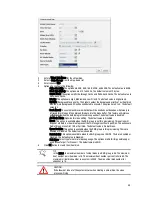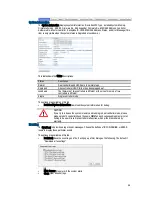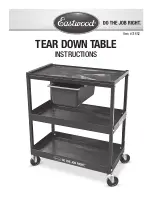
61
RAID 5
Striping with interspersed parity over the member disks. RAID 5 allows one hard
drive failure or unplugging.
RAID 6
2-dimensional parity protection over the member disks. RAID 6 allows two hard
drives failure or unplugging. If it needs to rebuild two hard drives at the same time,
it will rebuild the first one, then the other in sequence.
RAID 0+1
Mirroring of RAID 0 volumes. RAID 0+1 allows two hard drive failures or
unplugging, but at the same array.
RAID 10
Striping over the member of RAID 1 volumes. RAID 10 allows two hard drive failure
or unplugging, but in different arrays.
RAID 30
Striping over the member of RAID 3 volumes. RAID 30 allows two hard drive failure
or unplugging, but in different arrays.
RAID 50
Striping over the member of RAID 5 volumes. RAID 50 allows two hard drive
failures or unplugging, but in different arrays.
RAID 60
Striping over the member of RAID 6 volumes. RAID 60 allows four hard drive
failures or unplugging, every two in different arrays.
JBOD
The abbreviation of “Just a Bunch Of Disks”. No data protection. RG fails if any
hard drive failures or unplugs.
Migrate and Move RAID Groups
Migrate RAID Level function changes the RAID group to different RAID level or adds the member disks of the
RAID group for larger capacity. Usually, the RAID group migrates to higher RAID level for better protection. To
do migration, the total size of RAID group must be larger than or equal to the original RAID group. The
limitation is that it’s not allowed expanding the same RAID level with the same physical disks of the original
RAID group. There is a similar function Move RAID Level which will move the member disks of the RAID
group to totally different physical disks. In addition, thin provision RAID group cannot execute migrate or
move, it uses Add RAID Set to enlarge capacity. Describe more detail in the Thin Provision section.
There are some limitations when a RAID group is being migrated or moved. System would reject these
operations:
1.
Add dedicated spare.
2.
Remove a dedicated spare.
3.
Create a new virtual disk.
4.
Delete a virtual disk.
5.
Extend a virtual disk.
6.
Scrub a virtual disk.
7.
Perform another migration operation.
8.
Scrub entire RAID group.
9.
Take a snapshot.
10.
Delete a snapshot.
11.
Expose a snapshot.
12.
Rollback to a snapshot.
















































